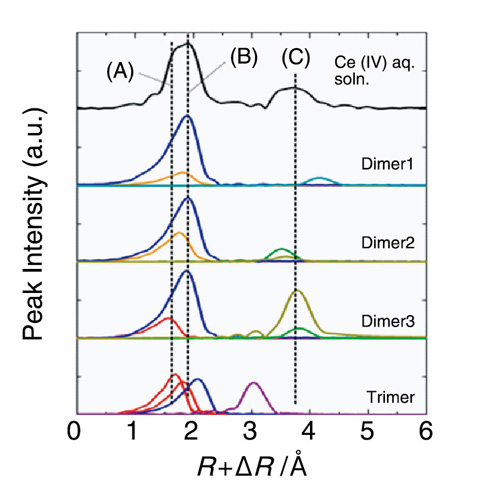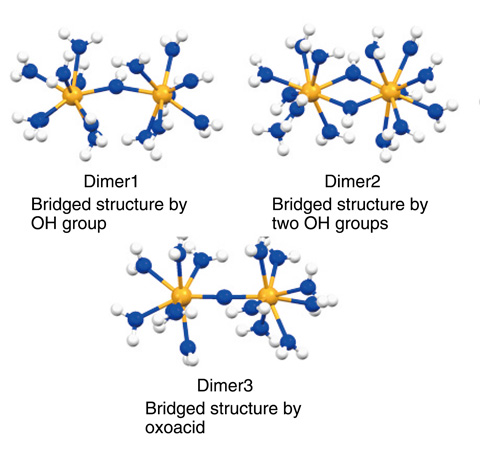
Fig.5-17 Radial structural functions of synchrotron based Ce-K XAFS for aqueous Ce(IV) solution

Fig.5-18 Chemical structure of dinuclear Ce(IV) complexes determined by XAFS and molecular orbital calculation
Tetravalent cerium (Ce(IV)) is one of the widely known inorganic oxidizing agents, particularly in the field of organic synthesis. More recently, Ce(IV) has attracted considerable attention as an electron sacrificial oxidant in studies of the photocatalytic oxidation of water to produce H2 and O2 for energy sources; thus, a continuous demand for Ce(IV) is still anticipated in various basic and applied research fields. As a powerful chemical reagent, Ce(IV) is often employed in aqueous solutions, and thus, Ce(IV) interacts with the target substances to be oxidized or activated as aquo species. However, the nature of the Ce(IV) aquo species is far less well understood. Therefore, the detailed characterization of the Ce(IV) aquo species is indispensable for elucidating the appropriate reaction schemes in which Ce(IV) species play an important role and for discussing the origin of the functionality of Ce(IV) in applied systems. Thus, we carried out the present EXAFS and DFT calculation study to identify the speciation and complex structure of the Ce(IV) aquo species in an aqueous perchloric acid (HClO4) solution.
The EXAFS Fourier transform (FT) of the Ce(IV) aquo species (black data in Fig.5-17) exhibits two well-defined peaks at approximatley R+Δ= 1.8 and 3.7. The first peak at R+Δ= 1.8 Å corresponds to the coordination of water molecules and possibly hydroxide ions. Meanwhile, the second peak at R+Δ= 3.7 Å is interpreted as scattering from the Ce(IV) atoms.
To probe the probable structural arrangement of polymeric Ce(IV) species, geometry optimization based on the DFT theory was carried out for di- and trinuclear Ce(IV) complexes in the aqueous phase, as shown in Fig.5-18. The geometry optimization was converged for three dinuclear and one trinuclear complexes, as shown in the inset illustrations in Fig.5-17. Based on a detailed data analysis of the EXAFS results and comparison of the data with the DFT results, it was concluded that the “single oxo-bridging” dinuclear complex (Dimer3 in Fig.5-18) was the most dominant form of Ce(IV) species in the HClO4 solution. The dinuclear complexes shown in Fig.5-17 are energetically close to one another, implying that all of these species are potentially involved in the dimerization process of Ce(IV), although the final species is likely to settle into the “single oxo-bridging” structure. The bridging-oxo groups of the dinuclear complex are chemically active. Therefore, this species would also be effective as an oxygen source, in addition to its significant role as an oxidant.